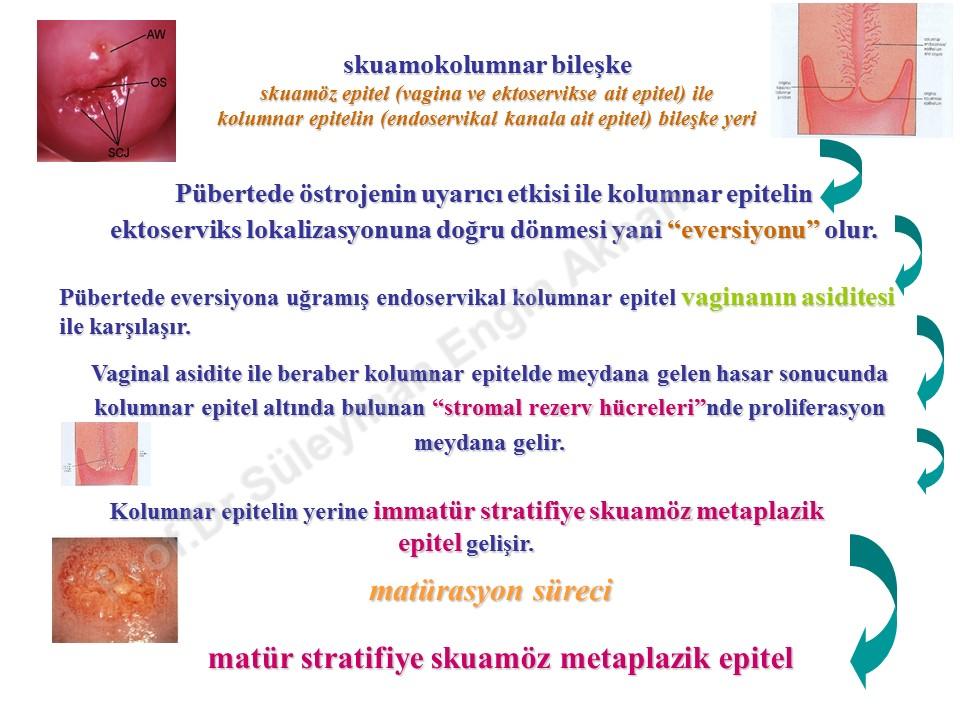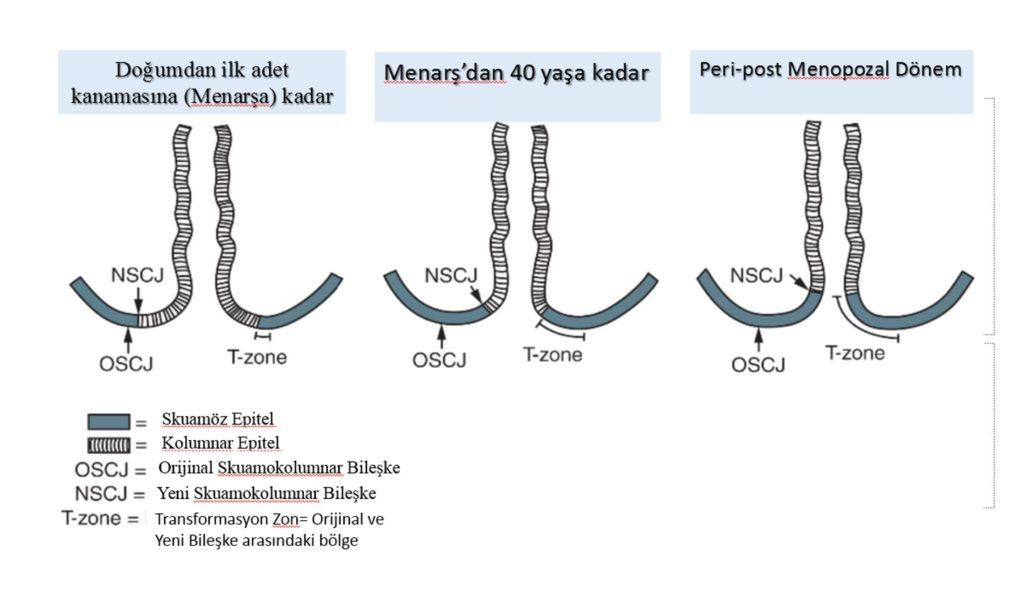What Is Transformation Zone? Why Is It Important?
Cervical cancer precursors and nearly whole cervical cancer occur from transformation zone (transition zone) forming a part of the cervix. Therefore cancer precursors, which we call CIN, are very important in terms of understanding their treatments.
“Cervical dysplasia”, which we identify as cervical cancer precursor lesions, in other words “cervical intraepithelial neoplasia, (=CİN)” or as we more frequently hear CIN I, CIN II and CIN III often occur from the region, which we call “transformation zone” in cervix.
Therefore while we are performing colposcopy, we evaluate transformation zone and we try to remove this region while applying surgery.
What Is Transformation Zone?
Cervix is the organ in cylinder shape connecting vagina and cervix. Its length is 4-5 cm and thickness is nearly 2.5 cm. The part we monitor and receive smear during the examination is the external part of cervix, which we call “external os”. This external part of the cervix is covered with cells belonging to vagina tissue, which we call squamous cells. The part we call “internal os” is the internal part, which we don’t monitor during examination and it is covered by cells of inner-uterus tissue, which we call columnar epithelium (or grandular tissue) belonging to uterus. The most important characteristic of these cells is to produce secretion.
The region, in which vagina tissue (squamous epithelium) and inner-uterus tissue (columnar epithelium) come across in cervix, is called transformation zone.
The most important characteristic of transformation zone is that two tissues irrelevant from one another come across. The fact that irrelevant cell groups come across causes existence and continuation of, less or more, a cycle that we call “metaplasia change” in transformation zone for the whole life of the woman.
Development of Transformation Zone With Puberty and Adolescence in Young Girls
In fact the cycle starts with puberty. In puberty, columnar epithelium covering the inner part of the cervix turns outwards. Meanwhile lactobacillus is dominant in vagina by the impact of increasing estrogen by the start of puberty. It is the natural flora of vagina in reproductive age. At the same time, this flora provides acidity of vagina and pH in vagina reduces to 4, it becomes acidic.
Hence inner tissue of cervix (columnar epithelium) turning outwards in puberty comes across acidity of vagina. As a result of the damage occurring due to acidity, proliferation arises in “stromal reserved cells’. This situation ends by the development of the tissue called “stratified squamous metaplasia epithelium” instead of columnar epithelium. Immature squamous epithelium, in other words immature vagina epithelium enters into maturation process a while later. As a result, metaplasia squamous epithelium hardly separated from squamous epithelium occurs. Hence squamous metaplasia zone revealing maturation in different degrees occurs in transformation zone. We refer to this as cycle metaplasia change.
When the woman menstruates for the first time, transition zone becomes more prominent due to acidic ambient. If we think about cervix as a cylinder, the process called “squamous metaplasia” all around the transformation zone forming a part of this cylinder continues during the adolescence. If you think about the transition zone as a ring forming a part of the cylinder, there are also metaplasia cells all around this ring. The number of metaplasia cells in transition zone in adolescence period (until 18 years old) is in the highest level during the life.
Therefore adolescent young girl is very open to HPV infections, because HPV likes to infect metaplasia cells!! Hence cervical cancer occurrence risk in young girls, who have sexual intercourse and are infected by HPV virus at young ages, is higher. Cervical cancer risk is 26 times MORE in young girls, who are sexually active within the first one year after being menstruated (please remember our child bride girls in our country)!!
Anatomic Characteristics of Transformation Zone
Anatomic Characteristics of Transformation Zone are originated from cervical cancer and precursors, transformation zone. If you read the books and investigate a lot on internet anatomically, you will absolutely see two descriptions, which are “original squamocolumnar junction” (Original squamocolumnar junction) and “new squamocolumnar junction” (New squamocolumnar junction).
The region, in which uterus’ (columnar epithelium) and vagina (squamous epithelium) tissues, which exist when the girl is born (they are formed in 20 weeks of pregnancy in the mother’s uterus), come across is called “Original junction”. This area expands outwards to vagina with puberty and acidity of vagina. Hence, the area, which is the zone that we may identify as region and in which metaplasia cycle that we mention above, is observed, occurs. Anatomic and cellular story of the incident is like that 🙂
“Cervical intraepithelial neoplasia”, which we call CIN, originates from this region. And when we apply conization on the purpose of treatment, we remove this region, in other words transformation zone. Therefore, hereafter you will always hear and read the words of “transformation zone” 🙂
13 Ekim 2014 tarihinde Prof. Dr. Süleyman Engin Akhan tarafından yayınlanmış ve 20 Kasım 2018 tarihinde de son güncelleme yapılmıştır.



